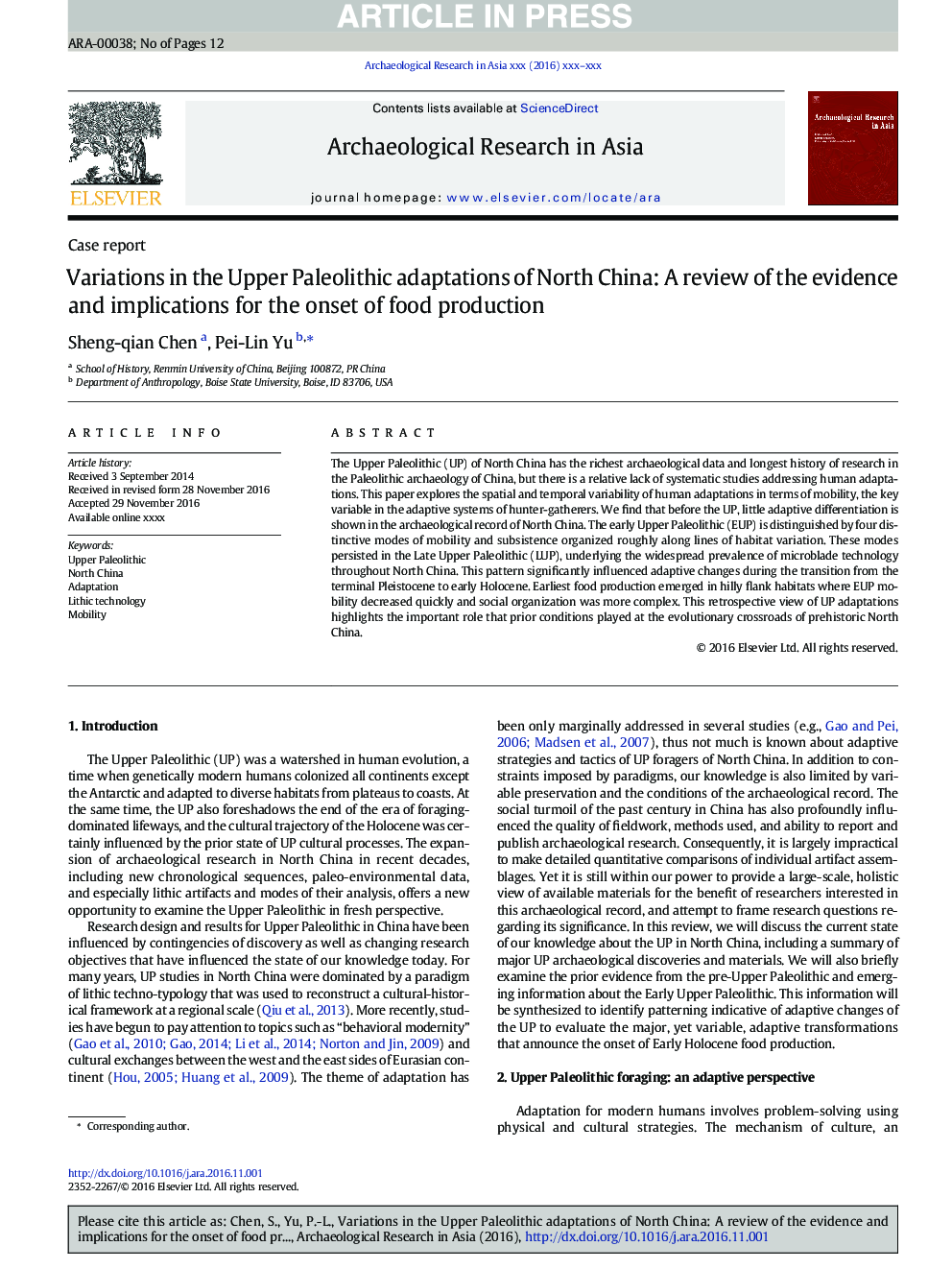| Article ID | Journal | Published Year | Pages | File Type |
|---|---|---|---|---|
| 5111888 | Archaeological Research in Asia | 2017 | 12 Pages |
Abstract
The Upper Paleolithic (UP) of North China has the richest archaeological data and longest history of research in the Paleolithic archaeology of China, but there is a relative lack of systematic studies addressing human adaptations. This paper explores the spatial and temporal variability of human adaptations in terms of mobility, the key variable in the adaptive systems of hunter-gatherers. We find that before the UP, little adaptive differentiation is shown in the archaeological record of North China. The early Upper Paleolithic (EUP) is distinguished by four distinctive modes of mobility and subsistence organized roughly along lines of habitat variation. These modes persisted in the Late Upper Paleolithic (LUP), underlying the widespread prevalence of microblade technology throughout North China. This pattern significantly influenced adaptive changes during the transition from the terminal Pleistocene to early Holocene. Earliest food production emerged in hilly flank habitats where EUP mobility decreased quickly and social organization was more complex. This retrospective view of UP adaptations highlights the important role that prior conditions played at the evolutionary crossroads of prehistoric North China.
Related Topics
Social Sciences and Humanities
Arts and Humanities
History
Authors
Sheng-qian Chen, Pei-Lin Yu,
